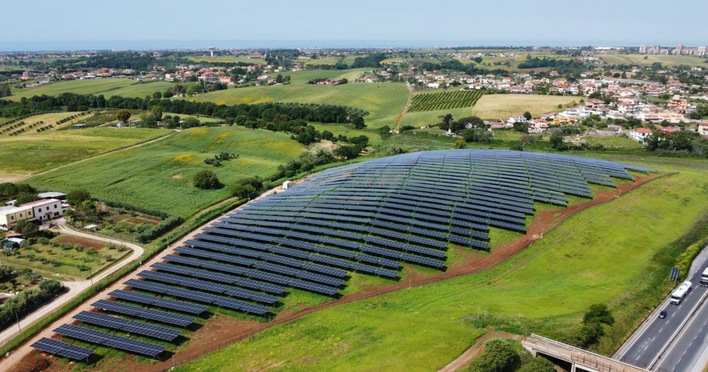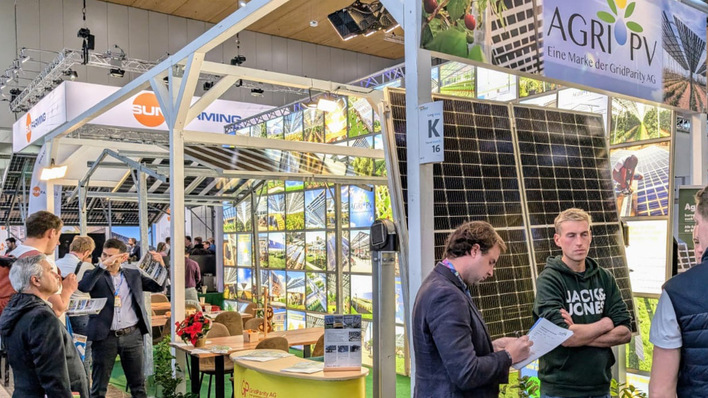Agriphotovoltaic systems can improve the water balance in periods of drought by shading the soil under the modules. As a result, the shading provided by the solar system also increases agricultural production yields, even in periods with little precipitation. What has so far been an assumption and initial investigations have now been scientifically confirmed by a study at the University of Hohenheim in Stuttgart.
Yield increases
Thus, the combination of photovoltaics and agriculture is increasingly becoming part of a solution faced by farms and farmers in many regions of the world - including Germany and Europe: the dwindling amounts of water. "It is true that shading from photovoltaic systems reduces yields when there is sufficient water available for plant growth," explains Lisa Pataczek, a research assistant at the University of Hohenheim who played a key role in the study. "When water is scarce, however, the plants benefit from less evaporation and thus less water loss: the yield is higher than on the unshaded areas," she summarises the results of the study.
See also: Will solar parks produce more than energy in future?
From the researchers' point of view, this stabilising effect on crop yields makes agriphotovoltaics a promising technology. They see particular potential in drought-prone regions of the world. These include the western United States, eastern and southern Africa, the Arabian Peninsula, the Middle East, India and Australia. This is particularly important in countries with pronounced droughts and massive population growth, such as India, in the researchers' view. "In addition, in the peripheral areas of all the world's major deserts, photovoltaics represent a strategy for combating desertification," explains Andreas Schweiger. The professor led the study at the University of Hohenheim.
Solution for future drought regions
In regions with groundwater scarcity, this could reduce the depletion of this important resource and at the same time reduce CO2 emissions from electricity generation, which in turn counteracts climate change. "Agriphotovoltaics thus not only contributes to mitigating the effects of climate change in regions that are already classified as arid," Schweiger emphasises. "It will be particularly important for regions that will face increasing water scarcity in the future, such as large parts of the Mediterranean region."
Some plants benefit from shade
However, the potential for increasing yields varies greatly depending on the climatic conditions, says Schweiger. This depends strongly on the plants grown in such dual land-use systems, he says. "Most of the crops studied so far tolerate shading of up to 15 per cent without significant yield losses," says the expert. Berries, fruit and fruiting vegetables actually benefit from shading, while the yields of fodder plants, leafy vegetables, tubers and root crops as well as most cereals suffer minimally.
Also interesting: Coburg University and IBC Solar develop solar tiny house
On the other hand, yields of crops that need a lot of sunlight are severely affected. Schweiger mentions maize, field beans, soya and lupines, which yield less even with little shade. "However, there is still a lack of detailed, well-founded knowledge about the relationships between the different forms of agriphotovoltaics and the reactions of the various plants," says Lisa Pataczek, pointing out that there is still a great need for research.
Developing systems further
Because these reactions are not limited to the water supply. "For example, many plants begin to increase the growth of the above-ground, photosynthetically active leaf material in the shade. This is interesting in lettuce, for example, as this part of the plants is of economic interest," she describes the connection. However, further research results are not only needed to select the optimal plants for the respective shading under the given climatic conditions. They can also contribute to the development of intelligent agriphotovoltaic systems that use the stress signals of the plants in real time to control the orientation of the panels and thus the shading. (su/mfo)








